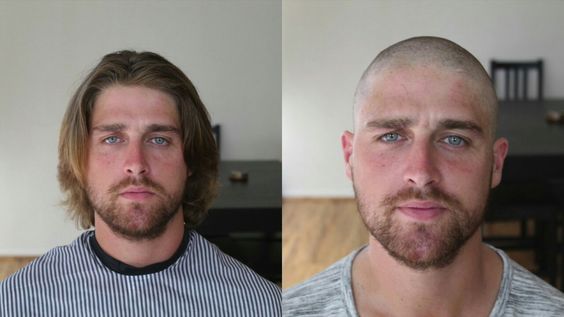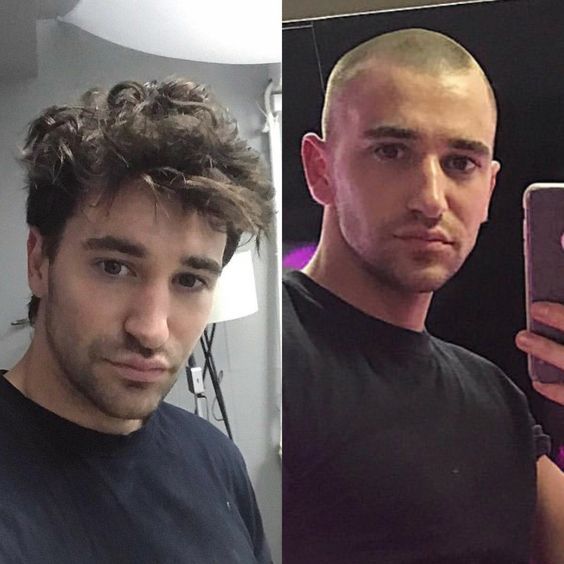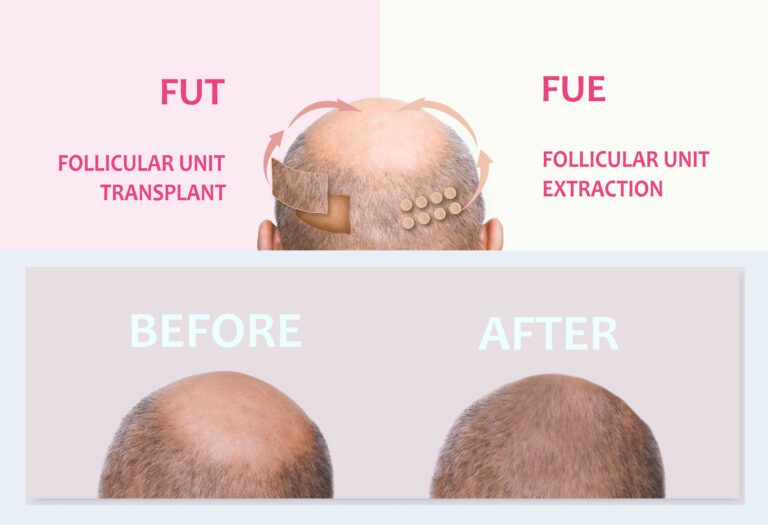What Is a Hair System? A Comprehensive Guide
Modern problems require modern solutions—that’s why more and more people have replaced old-fashioned wigs with full-fledged hair replacement systems. These creations are far more effective since they look more natural and don’t fall off as easily.
But what is a hair system anyway?
In this article, we answer your question in great detail, going over what a hair system is made of, its pros and cons, and how to use it.
We’ll also answer several questions that you may have about this non-surgical hair loss solution so that you can judge whether or not it’s worth trying.
Hair Replacement Systems: An Overview
A hair system is also known as a non-surgical hair replacement, hairpiece, or hair unit. It looks a lot like a wig, only it’s made of high-quality synthetic hair or human hair attached to a base material that you fit over your head.
Unlike a wig, the hairpiece’s base is taped or glued into the wearer’s scalp, whichever method you prefer. Finally, you can cut or shape the hair to make it look more realistic.
Wearing a hair system is a more common solution in men. It makes sense because a PMC study has proven that androgenetic alopecia affects 67.1% of males and 23.9% of females.
Still, hair replacement systems are available for women, too, to boost their hair’s volume, extend its length, or fill in exposed parts of their scalps.
The best thing about this hair replacement solution is that it leaves so much room for customizability. The hair can accurately match your own color and texture, offering a seamless appearance that traditional solutions have no hope of delivering!
Common Hair Replacement System Materials
After choosing either natural hair strands or artificial ones, people suffering from hair loss get to decide on the base material.
The type of material can be one of two things: polymers or mesh fabric. Let’s take a look at what both are and how they compare to help you make a well-informed decision.
Polymers
Polymer hair systems are usually made from silicone or polyurethane engineered to look like human skin. This hair system base gives you more durability and easy attachment, not to mention that it’s more budget-friendly.
However, people who tried this base complained that it was uncomfortable to wear, causing itchiness. Another downside is that it gets too hot.
If you’re willing to handle its drawbacks, we recommend you try a lace-like polymer base. Otherwise, your hairline won’t appear natural.
Mesh Fabric
If you want a more breathable option, a hair system base made of mesh fabric is a better go-to. Wearers admired its added comfort, lighter weight, and untraceable hairline.
But you should expect to replace it more often than its polymer counterpart since it’s more susceptible to tears.
Plus, because they require detailed manufacturing techniques, meshes will cost you more.
What Are the Pros of Non-Surgical Hair Replacement Systems?
Hair systems are such a popular choice for people with hair loss problems for the following reasons:
Affordable Upfront Costs
Compared to hair transplant surgeries, the upfront costs of hair systems are insignificant. This makes them a great solution if you don’t have the funds to get a transplant but are considering it in the future when you have more money.
Of course, hair replacement systems aren’t as affordable as other non-surgical hair loss treatments (like Minoxidil). But since they yield much faster results, the higher price may be worth it if you want an instantaneous solution.
Non-invasive and Immediate Results
With hair systems, you don’t have to deal with the potential complications of surgical hair transplants, like irritation, infection, or scarring. Let’s not forget about problems related to anesthesia, such as triggering an allergic reaction.
The same goes for recovery, which tends to be painful, requires special scalp treatment, and takes a long time until you fully heal.
Even better, you won’t have to wait until your hair grows—you can sport a head full of lush hair in a matter of minutes!
Easy to Undo
Miss your old look? You can easily take off the hair system because it’s simply just taped onto your scalp.
This feature also allows you to try different hairpieces on until you find the perfect fit without worrying about being stuck with your initial choice.
Suitable for Several Types of Hair Loss
It doesn’t matter what form of hair loss you’re dealing with; wearing a hair system works for anything. Some examples include:
- Male pattern baldness (androgenetic alopecia)
- Alopecia areata
- Cicatricial alopecia
- Anagen effluvium
- Tinea capitis
That’s because a hair system’s main function is to cover exposed parts of the scalp. It doesn’t stimulate the follicles to grow hair, like some other treatments, which doesn’t always work with severe hair loss.
What Are the Cons of Non-Surgical Hair Replacement Systems?
Similar to all hair loss solutions, hair systems have a few drawbacks that you should be aware of before committing to this investment.
Only a Superficial Option
Hair replacement systems don’t tackle the problem of hair loss itself. So, if there’s a chance that you can counter your hair loss or slow it down, using a hair system may convince you to put off seeking more effective treatment until it’s too late.
As a result, you’ll have no option but to undergo a hair transplant surgery, which you may not be ready for financially.
Wearing and Replacing Is a Hassle
Putting on a hair unit isn’t the hardest thing to do, but it needs you to be much more careful than wearing a wig.
It’s even more time-consuming if you’re replacing an old hair system with a new one. You’ll have to go to great lengths to recreate the same look, repeatedly cutting and styling your hair until you’re satisfied with the results.
Costs Add Up Overtime
If you’re ready to commit to the hair system lifestyle, you’ll have to save up for the expenses of purchasing, fitting, maintaining, and finally replacing it.
In a few years, the total costs can end up being higher than having a hair restoration surgery.
But the good news is that these costs are stretched over a long time, so you won’t feel like they’re affecting your budget much. That is if you’re not particular about leading an economic lifestyle.
May Damage Existing Hair
Just because putting a hair system on is non-invasive doesn’t mean it won’t leave its mark.
The adhesive or tape you’ll be using to fix it into place could harm your scalp and existing hair follicles. The glue can easily pull your remaining hair free if you’re not careful, further deepening your hair loss problem.
How Do You Use a Hair System?
After weighing the pros and cons and deciding you’re ready to give it a shot, it’s time to learn the proper way to attach a hair system.
- While this isn’t a must, it’s best to shave your head completely so that the hair system will adhere to your scalp with no trouble.
- Wash your scalp with water and soap (also use antibacterial sanitizer) to clear off natural oils that could prevent proper adhesion or cause irritation.
- Dry your scalp thoroughly with a soft towel, then use a blow dryer on your head to ensure there’s no moisture left. Don’t use the hot setting to avoid irritating your skin.
- Apply your preferred hair system glue or tape on the base of your hairpiece and then carefully place it on top of your head, starting at the front.
- Ensure that the hair system’s hairline matches yours for a natural look.
- Make any necessary adjustments such as tapering the sides, cutting some parts of the hair short to your liking, etc.
We wouldn’t expect everyone to get a hang of attaching a hair system on the first try. If you don’t have sure hands, the better option is to have a professional fit the hair unit onto your scalp to avoid mistakes.
How Long Do Hair Systems Last?
Hair systems can last for as long as six months, but not all of them do. To understand how long your hair system will likely live, think about these factors first.
Styling Frequency
Naturally, the more frequently you tinker with your hair system, the more you expose it to tears and abrasions. So, you can expect the base to lose its firmness in three to six months.
Contrarily, people who only cut or style their hair systems on occasion won’t need to replace them as often.
Hair System Material and Hair Type
Typically, systems made with natural hair will have a shorter lifespan than those that have synthetic hair because human hair is thinner and less durable.
Another thing you need to consider is the base material. Polymers will last longer than meshes, but remember that they’re less likely to give you realistic results.
Finally, pay attention to how the hair is attached to the base since lace and skin-front systems aren’t as long-lasting as their monofilament equivalents. But again, the former are more natural-looking than the latter, so they’re still worth considering even if they wear down before six months.
Use, Care, and Maintenance
Proper use, care, and maintenance of your hair system can play a vital role in its longevity.
If you’re generally rough with it, whether during brushing or styling, don’t expect it to last long. Also, your showering frequency and hair care routine can either prolong its lifespan or call for a replacement too soon.
So, you’ll have to learn the right way to live with a hair system to extend its lifetime, which we’ll dive into shortly.
Environmental Elements
Several elements can have mild to severe effects on the integrity of your hair system.
Prolonged exposure to moisture, UV light, chlorine, or other harsh chemicals gets in the way of a healthy-looking, long-lasting hair system.
How to Increase the Lifespan of Your Hair System?
Follow these practices to extend the longevity of your hair system (hopefully beyond the six-month mark):
- Don’t use too many hair products, especially those with harmful chemicals or alcohol.
- Don’t skip the conditioner.
- Avoid exposing it to too-hot water and high temperatures from blow dryers or hair straighteners.
- Consider sleeping on a satin pillowcase to reduce friction.
- Be gentle when brushing or styling your hair.
- Steer clear of brushing your hair while it’s wet.
- Don’t swim in pools with too much chlorine (once every now and then should be okay).
How Effective Are Hair Systems: Before and After
Hair systems are effective in hiding those patches of exposed scalp or even your entire head if you’re completely bald. Besides the advantages that people admire hair systems for, looking at pictures of before-and-after cases can be quite convincing.
Here are a couple of our favorites:

As you can see, attaching a hair system completely transformed this guy’s looks. Better, you can’t tell whether it’s a hair unit or the real thing!
Source: https://www.pinterest.com/pin/794815034226434122/

This is another before-and-after that shows you how a carefully selected hair system can do wonders for your appearance. Just make sure it matches your hair color and type, and you’ll be good to go!
Source: https://www.pinterest.com/pin/794815034226361035/
FAQs
How much can a hair system cost you?
Hair systems range in price from a few hundred dollars to thousands. The cost depends on whether you’ll buy one and DIY or have it professionally installed.
Other factors that affect the total price include hair system material, design, and manufacturer.
Can hair systems fall off like wigs?
If you attach yours properly to your scalp or go to the hair salon for expert help, your hair system will be less likely to fall. It’ll never fall off like a wig, though!
From time to time, you might need to reapply tape or adhesive to keep the hair system intact. You’ll know that this time has come when parts of the hair unit look a bit raised.
Can you shower or swim with your hair system on?
Showering with a hair system on is okay, just make sure you don’t run overly hot water on it or use too much shampoo.
Likewise, swimming in a pool or the sea won’t harm your hair system as long as you use conditioner on it afterward. This practice ensures the hair doesn’t get too dry, which could lead to rapid damage.
Can you work out at the gym with your hair system on?
Yes, you may go to the gym while wearing a hair system.
Sweat, no matter how excessive, won’t make it fall off if you’ve used a high-quality adhesive.
What are some other non-surgical alternatives to using a hair system for hair loss?
The market is teeming with non-invasive hair loss treatments you may want to consider, such as:
- Finasteride
- Minoxidil
- Topical medication (ointments, creams, lotions, gels, and the like)
- Low-level laser therapy (LLLT)
- Hair growth tablets
To Wrap It Up
A hair system can be one of the best solutions for your hair loss problem. It consists of strands of real human hair or artificial fibers adhered to a base that you tape to your scalp.
It has many plus points, like its low upfront costs and high customization ability. However, it doesn’t actively solve your hair loss issue, not to mention that it could harm your existing hair.
But the good news is that a hair system can last for up to six months if you take proper care of it.
So, now that you know what to expect when using a hair system, you can finally decide whether it’s suitable for your needs.







